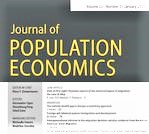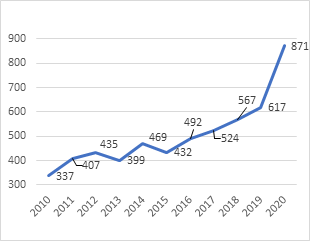Hyperbolic utility discounting has emerged as a leading alternative to exponential discounting because it can explain time-inconsistent behaviors. A new paper published in the Journal of Population Economics uses hyperbolic discounting in an intergenerational model with altruistic parents to find that in the steady state it decreases fertility, increases human capital investment, and shifts consumption towards younger ages.
The Global Labor Organization (GLO) is an independent, non-partisan and non-governmental organization that functions as an international network and virtual platform to stimulate global research, debate and collaboration.

Hyperbolic discounting in an intergenerational model with altruistic parents
by Jia Cao & Minghao Li
Published ONLINE FIRST 2021: Journal of Population Economics FREE READ LINK.
Author Abstract: Hyperbolic utility discounting has emerged as a leading alternative to exponential discounting because it can explain time-inconsistent behaviors. Intuitively, hyperbolic discounting should play a crucial role in intergenerational models characterized by intertemporal trade-offs. In this paper, we incorporate hyperbolic discounting into a dynamic model in which parents are altruistic towards their children. Agents live for four periods and choose levels of consumption, fertility, investment in their children’s human capital, and bequests to maximize discounted utility. In the steady state, hyperbolic discounting decreases fertility, increases human capital investment, and shifts consumption towards younger ages. These effects are more pronounced in the time-consistent problem (in which agents cannot commit to a course of action) than in the commitment problem, which can be interpreted as realized and intended actions, respectively. The preference-based discrepancy between intended fertility and realized fertility has important implications for the empirical literature that compares the two.

EiC Report 2020
Journal of Population Economics
Access to the recently published Volume 34, Issue 2, April 2021.
Workshop presentation of key articles with full video.
LEAD ARTICLE OF ISSUE 2, 2021:
Measuring gender attitudes using list experiments
by M. Niaz Asadullah, Elisabetta De Cao, Fathema Zhura Khatoon, and Zahra Siddique
OPEN ACCESS: Free Readlink – Download PDF
Ends;

